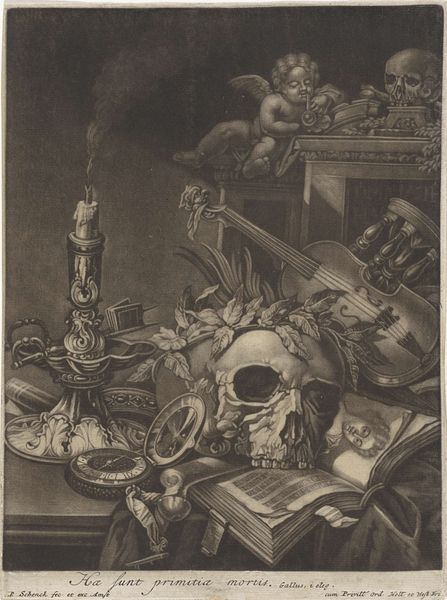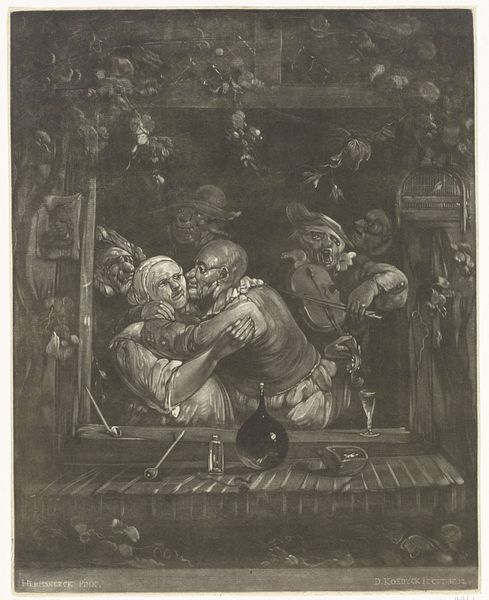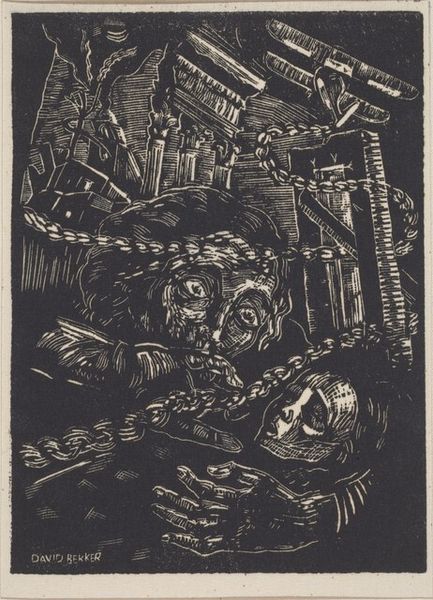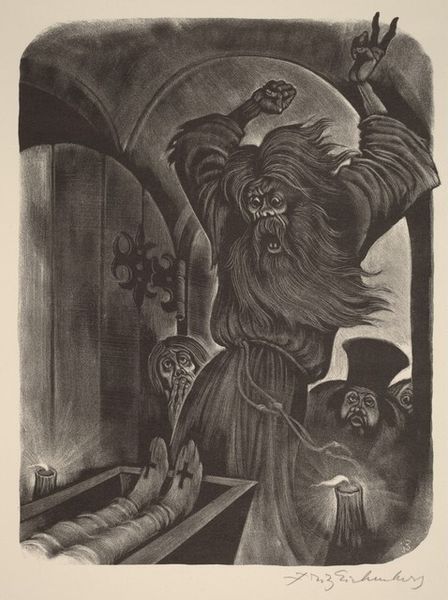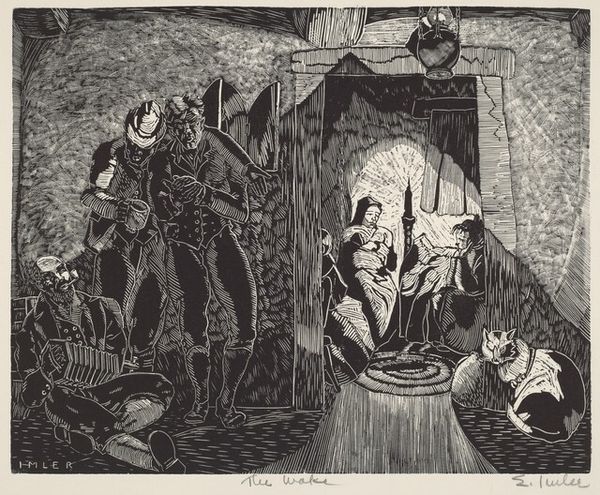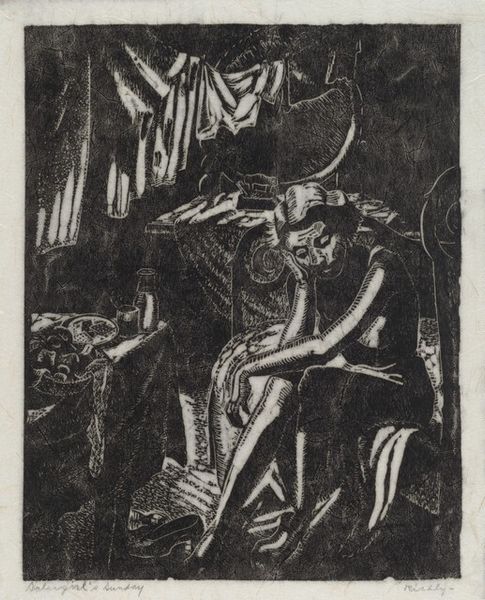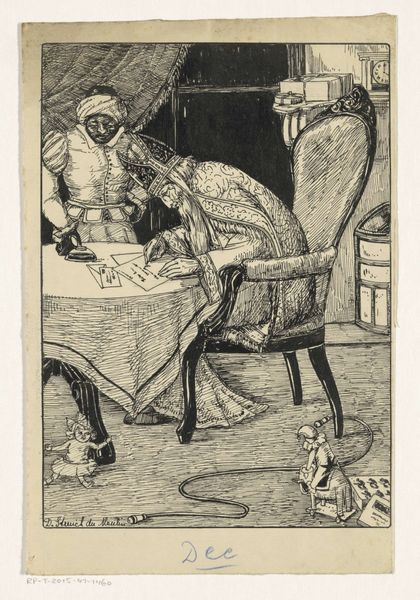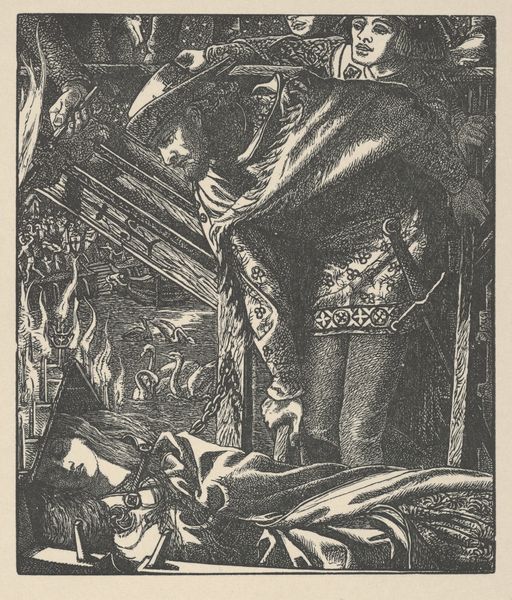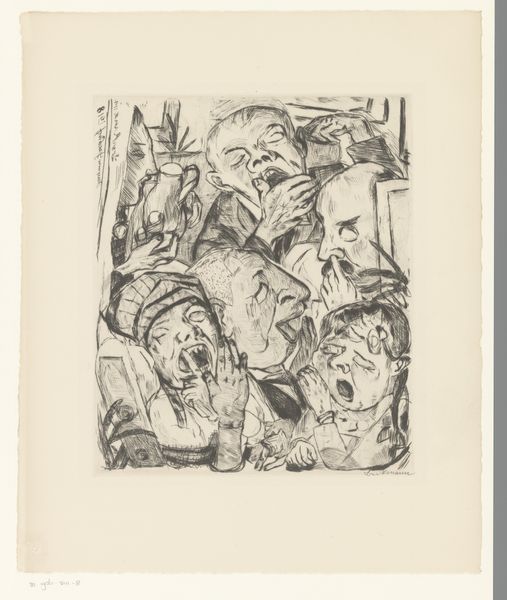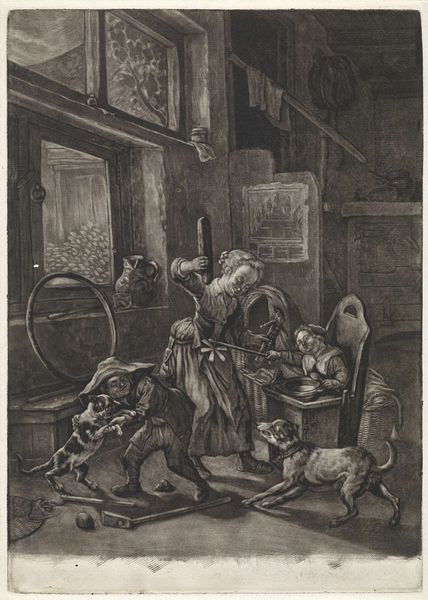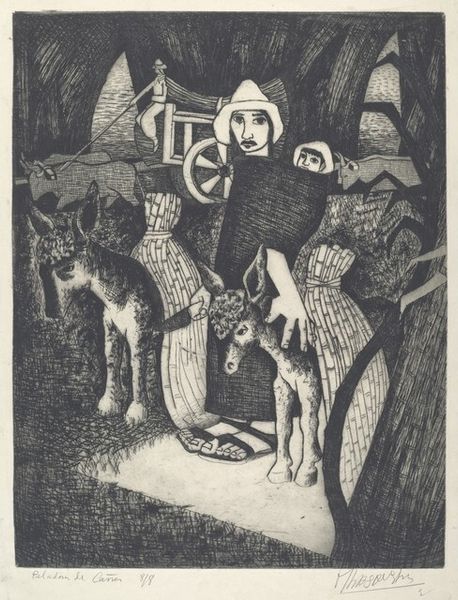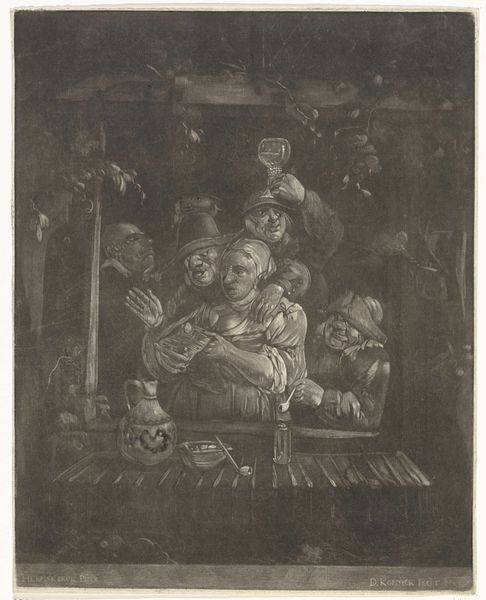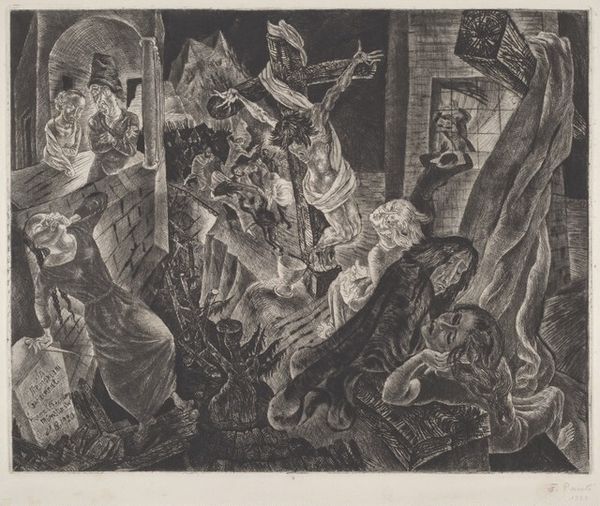
print, woodcut
# print
#
figuration
#
social-realism
#
woodcut
#
mexican-muralism
Copyright: National Gallery of Art: CC0 1.0
Curator: Leopoldo Méndez created "The Symphonic Concert of Skeletons" in 1943, using woodcut techniques. The stark black and white contrast immediately conveys a mood that's both macabre and, oddly, lively. Editor: That’s it; a rather dark carnival! Given Méndez’s association with the Taller de Gráfica Popular, it’s interesting how overtly political this piece feels, considering the use of the skeletons. It evokes a strong feeling of political satire—the theater setting and skeleton musicians amplifying the performance. Curator: The choice of woodcut here is important, right? The bold lines and limited tonal range give the image a directness, almost like a broadside or political cartoon meant for mass consumption. Also, there's a rough-hewn quality to woodcut—you feel the hand of the artist and the labor that went into it. Editor: Precisely. See, placing this in the context of 1943 is crucial: World War II was raging. Those skeleton figures—look closely, one with the “III International” labeled on the forehead, and the other donning the emblem reminiscent of a swastika—these are blatant political commentaries on the global power struggles of the time. This concert transforms into a scathing critique of ideologies colliding on a global stage. Curator: It's interesting to think about the physical process here—Méndez would have been carving away at the woodblock to create the design, a very physical and demanding task. This medium becomes really important for him to put an emphasis on his point of view. I also like to imagine the block itself and the marks of labor and history etched into it. Editor: Also the audience—a crowd of skeletons! This reflects Mexican traditions regarding death with popular art, particularly those referencing José Guadalupe Posada. It becomes more than mere critique; it underscores an understanding of death as the ultimate equalizer. It’s hard to ignore the class implications. Everyone dies, and the concert is for all, yet the power structures persist until that very end. Curator: Absolutely, looking closely at the materials really brings home the human effort behind political messages, and this allows us to view the images from different contexts. Editor: Understanding the historical context lets us realize the intersectional elements. It provokes meaningful dialogues—between Mexican history, social classes, global politics. Méndez goes beyond depicting, he sparks crucial discussion regarding the era we’re seeing in this picture.
Comments
No comments
Be the first to comment and join the conversation on the ultimate creative platform.
